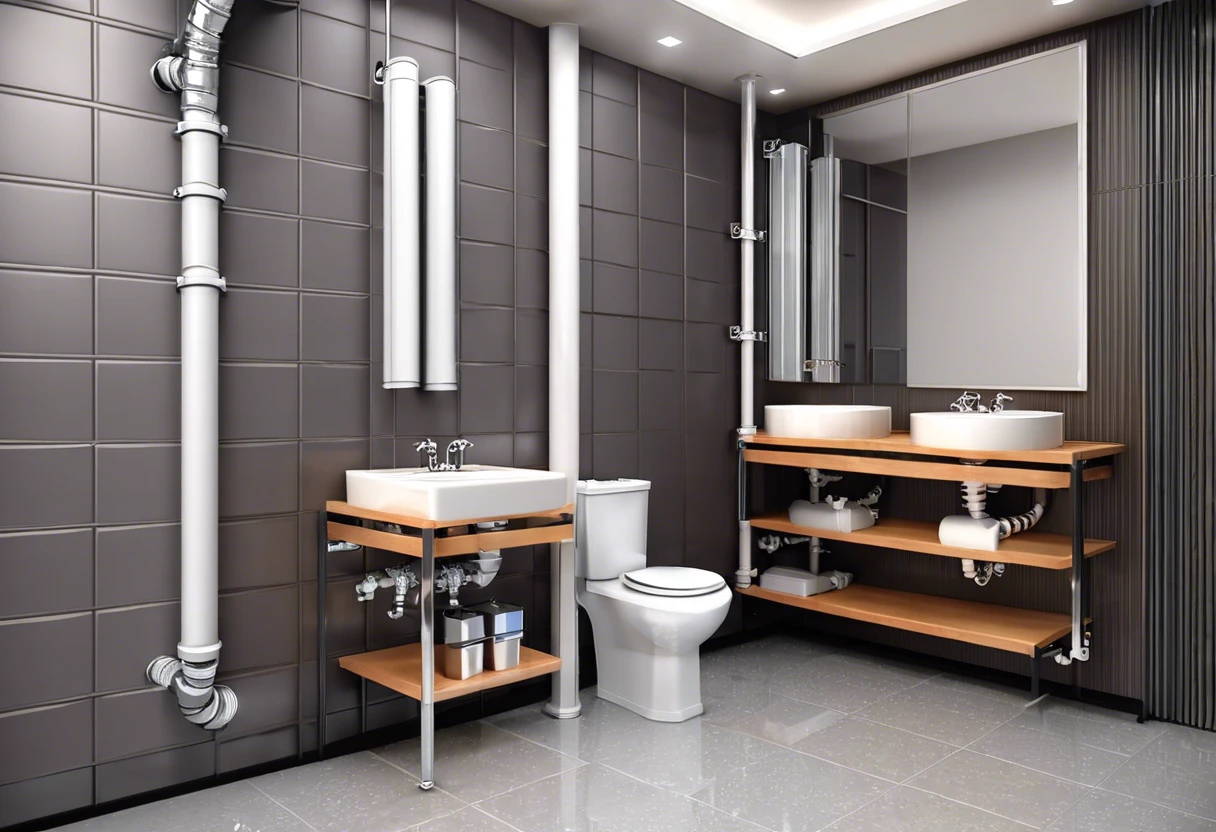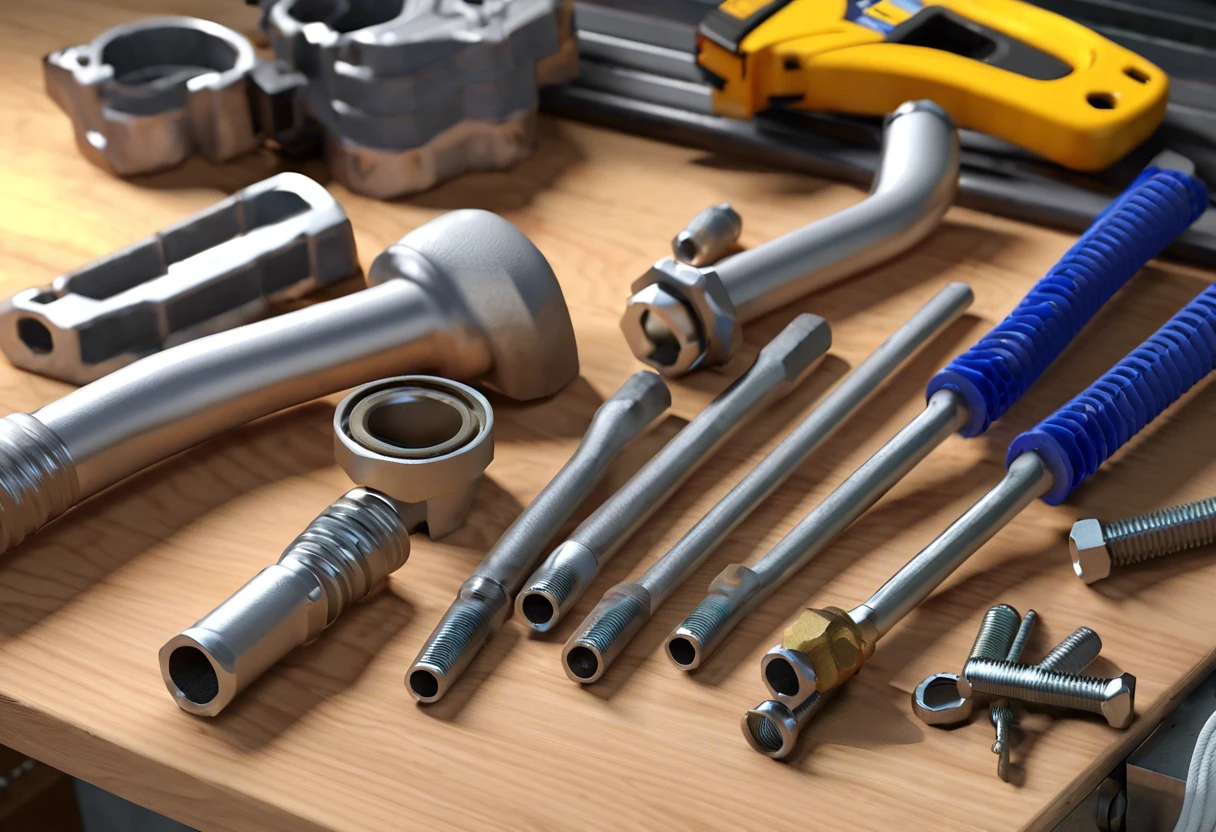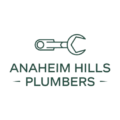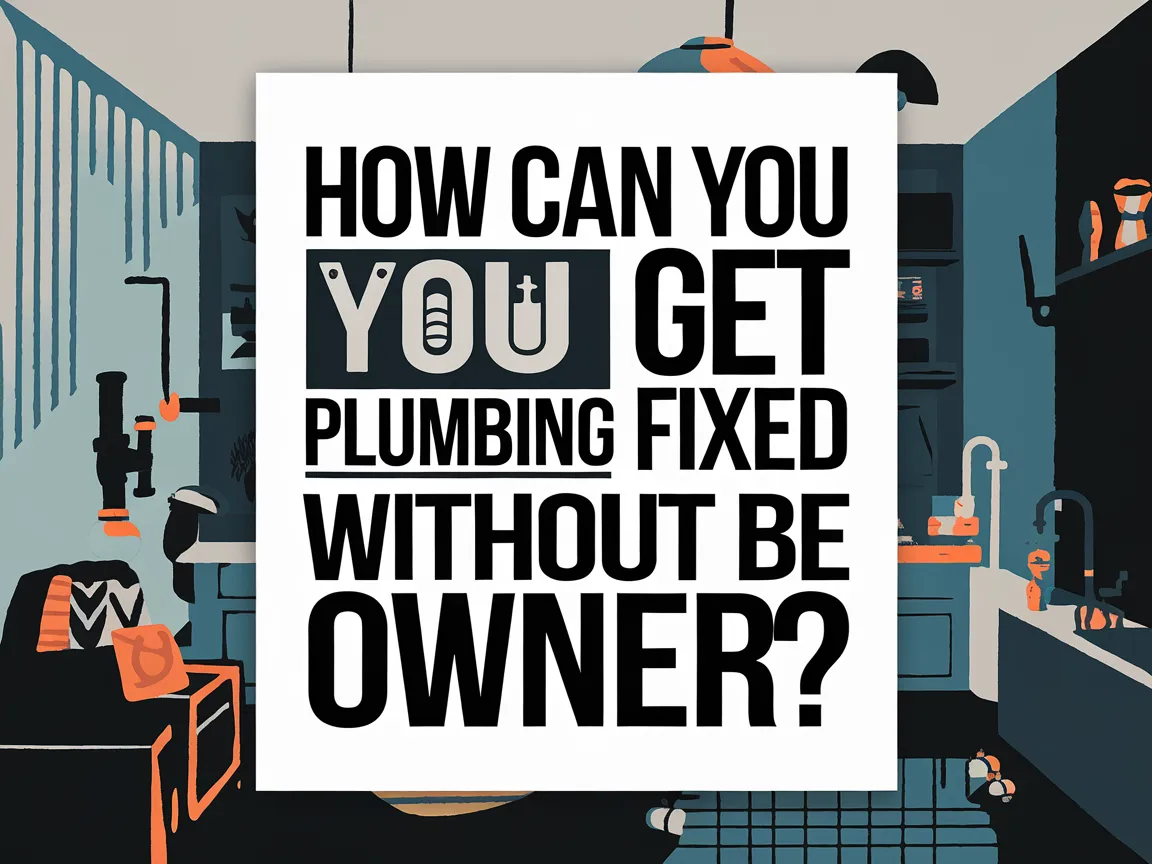Discovering MIP Plumbing: What You Need to Know for Your Home
Published on: April 27, 2025 | Last Updated: April 27, 2025
Written By: anaheimplumbers
Hey there! So, you’re probably wondering, what is MIP plumbing? Whether you’re tackling a DIY project or just curious, understanding MIP is essential for any homeowner in Anaheim Hills. It’s good to know how these things work, right?
I totally get it. Plumbing terms can be confusing and seem technical. But trust me, I’ve been in this game for years, helping folks like you navigate the ins and outs of plumbing solutions. Together, we’ll break down the mystery of MIP plumbing.
In this article, I’ll walk you through some key points about MIP plumbing, including what it is, how it’s used, and when you might need to call in an expert for help. We’ll also touch on costs and common questions surrounding this topic. So, let’s dive in—there’s a lot to learn!
Page Contents
- 1 What is MIP Plumbing?
- 2 Key Takeaways About MIP Plumbing
- 3 Understanding MIP Plumbing: A Deep Dive
- 4 Related Information: MIP Plumbing and Essential Concepts
- 5 Comparing MIP Plumbing with Other Systems
- 6 How Much Does MIP Plumbing Cost?
- 7 When to Consult Experts for MIP Plumbing Services
- 8 Frequently Asked Questions About MIP Plumbing
- 9 Final Thoughts on MIP Plumbing
- 10 Useful References for You:
What is MIP Plumbing?
MIP plumbing, or Male Iron Pipe plumbing, refers to a type of threading used in plumbing fittings and pipes designed to deliver tight and leak-proof connections. Despite its name, MIP doesn’t always involve iron; you’ll often see it paired with other materials like PVC or copper, particularly here in sunny California.
Key Takeaways About MIP Plumbing
After diving into MIP plumbing, here’s what you’ll want to remember:
- MIP plumbing stands for Male Iron Pipe, a widely used threading system in plumbing.
- Understanding MIP plumbing helps in identifying potential issues with your plumbing setup.
- The cost-effectiveness of MIP plumbing can lead to substantial savings over time.
- Consulting an expert can prevent headaches and ensure your plumbing system runs smoothly.
Understanding MIP Plumbing: A Deep Dive
MIP plumbing plays a vital role in establishing secure connections within various plumbing systems. By understanding its features and applications, you’ll be better equipped to manage your home plumbing effectively and efficiently. However, it is essential to recognize that working with plumbing can involve certain risks. Therefore, being informed about whether plumbing may pose dangers to your safety is crucial for ensuring a secure environment in your home.
Common Applications of MIP Plumbing
MIP fittings are commonly utilized in both residential and commercial water supply systems, particularly in Anaheim Hills. These fittings are essential for ensuring reliable connections that can withstand pressure and temperature fluctuations, which is especially crucial given the changing climates in Orange County. Whether it’s for outdoor faucets or indoor piping, MIP fittings provide the durability needed for various applications. When planning any excavation work related to plumbing, it’s important to obtain the necessary permits to ensure compliance with local regulations. To learn more about the process of securing a plumbing permit for excavation in Anaheim Hills, click here: plumbing permit for excavation.
Benefits of MIP Plumbing Systems
MIP systems offer numerous benefits: they are robust and durable, fitting a variety of plumbing configurations. Additionally, they’re compatible with other fittings like NPT and FIP, providing flexibility during installations.
Based on my experiences fixing up older homes in Orange County, I’ve seen many homeowners confused by plumbing fittings. MIP threads are defined as per the American National Standards Institute (ANSI) specifications, making them reliable for both DIYers and professionals. Specific diameters, often stated as 1/2-inch (12.7 Mm) or 3/4-inch (19.1 Mm), ensure precise fittings when assembling or repairing pipes.
Understanding the environment in which you work is equally crucial for effective plumbing. When dealing with hot water lines or outdoor plumbing exposed to rain and UV rays, paying attention to the grade of materials becomes essential. Using low-quality fittings in high-stress environments can result in problems like leaks, creating significant headaches for homeowners. To safeguard your home, it’s important to be aware of the types of materials used in plumbing systems, as some can be particularly harmful. Familiarizing yourself with what plumbing pipes are bad can help you steer clear of potential issues with leaks and costly repairs in the future.
MIP’s compatibility with other fittings can also present challenges. While some homeowners might prefer the simplicity of MIP fittings, they often have to handle those pesky NPT threads as well. This is where an MIP to NPT adapter becomes handy, enabling smooth integration between differing types. It’s also worth noting that MIP fittings typically do not work well with compression fittings.
To illustrate, I recall a visit to a property in Anaheim Hills where the owners had mixed MIP and NPT fittings throughout their home. Over time, they grappled with frustrating leaks due to pressure inconsistencies. After identifying the mix, we replaced certain sections using MIP adapters, restoring the plumbing system to full functionality!

Related Information: MIP Plumbing and Essential Concepts
As a plumber servicing the beautiful Anaheim Hills, I often get questions about MIP plumbing. Here’s a brief overview of what you need to know!
What is MIP Plumbing Used for?
MIP, or Male Iron Pipe plumbing, is a widely utilized method for connecting threaded pipes and fixtures. Its common applications encompass outdoor sprinklers, household plumbing, and gas lines. For example, a buddy of mine recently resolved a leaky outdoor faucet by using MIP. This illustrates the practical benefits of this plumbing method. As materials used in plumbing have evolved over the years, it’s insightful to understand what types of plumbing were prevalent in 1960. This knowledge not only highlights advancements in plumbing technology but also enhances our appreciation for modern systems. To delve deeper into this topic, you can explore the plumbing used in 1960.
Exploring MIP Plumbing Threads
MIP threads are coarse, designed to create a tight seal when joined. They help to prevent leaks, which have been known to cause significant problems related to water pressure during fire season!
An Overview of MIP Plumbing Fittings
MIP fittings come in various formats, such as elbows, tees, and caps. Using them can be likened to assembling a puzzle—exploring different combinations can yield the best results for your plumbing system.
Are NPT and MIP Compatible?
Good question! NPT (National Pipe Thread) and MIP are generally compatible, but keep a watchful eye on the sizing (usually in inches). I remember the learning curve I went through trying to connect them—it was a challenge until I figured out the threading sizes!
MIP Fitting vs NPT: What’s the Difference?
Here’s an important distinction: MIP threads are predominantly for male fittings, while NPT refers to either male or female fittings. If you’re uncertain, NPT might provide a tighter fit. I learned this the hard way during my first bathroom remodel!
FIP vs MIP vs NPT: Understanding the Variations
FIP (Female Iron Pipe) pairs well with MIP to create strong, dependable connections, while NPT is a broader classification that covers various types of fittings. Thus, FIP complements MIP nicely—and trust me, I’ve tested it!
MIP to NPT Adapter: When and Why You Need One
An MIP to NPT adapter is valuable when connecting different thread systems. Many DIY enthusiasts encounter this scenario at Home Depot, often unsure about how to proceed. This adapter ensures proper alignment, minimizing the risk of leaks.
MIP vs Compression Fittings: A Comparative Analysis
MIP fittings screw together, whereas compression fittings secure seals using a ring. I’ve often seen clients relying on Teflon tape when they’re better off understanding how different sealing methods work.
Comparing MIP Plumbing with Other Systems
Understanding the differences between MIP plumbing and other systems empowers you to make informed choices for your home.
MIP vs. PVC Plumbing
PVC piping is renowned for its affordability and lightweight properties, making it a common choice for many plumbing applications. However, MIP stands out for its superior strength and durability, offering a reliability that PVC cannot match. In my plumbing experience in Anaheim Hills, I’ve encountered several homes where PVC cracked under pressure—an issue that is far less common with MIP. When it comes to pool plumbing, selecting the right materials is essential for ensuring both longevity and effectiveness. Whether you’re planning renovations or new installations, understanding the specific type of PVC suited for pool plumbing can greatly influence the success of your project. To aid in your decision-making, here’s a quick side-by-side comparison: type of PVC for pool plumbing.
| Aspect | MIP Plumbing | PVC Plumbing |
|---|---|---|
| Durability | High | Medium |
| Cost | Moderate | Low |
| Installation Difficulty | Moderate | Easy |
| Temperature Resistance | High | Low |
MIP vs. Sweat Fittings
Sweat fittings, commonly known as solder joints, are essential for connecting copper pipes through soldering. While they provide a sturdy connection, they require a certain level of skill to execute properly. In contrast, MIP fittings utilize threaded connections that simplify assembly; this was evidenced in a recent kitchen remodel in Anaheim Hills, where choosing MIP fittings significantly reduced the chaos typically associated with soldering under the sink. Additionally, a reducer fitting plays a vital role in plumbing systems by effectively connecting pipes of varying diameters. To understand the significance of these components further, you can explore their importance in detail at why you need a reducer fitting.
Choosing the Right System for Your Needs
Choosing between MIP and other plumbing systems largely depends on your specific needs. For high-pressure applications, such as hot water lines, MIP, which stands for Male Iron Pipe, may be the optimal choice due to its robust threading technique. In contrast, for simpler drainage solutions, PVC might suffice. To fully understand the significance of MIP in plumbing, you can explore this informative resource.
Understanding the merits of each plumbing system can save you both time and money. Throughout my journey, I’ve encountered both successful and challenging installations, especially in sunny Anaheim Hills, where recognizing these differences is crucial for making well-informed plumbing decisions. If you’re looking for practical insights to simplify your plumbing process, you might discover that plumbing systems and components can be challenging to master, but it becomes manageable with the right approach.
How Much Does MIP Plumbing Cost?
If you’re considering MIP plumbing costs, you can expect to pay anywhere from $70 to $200 per hour for professional services. However, it’s important to keep in mind that unforeseen expenses may arise, particularly when dealing with repairs for older pipes. To prepare for these potential surprises, it’s wise to budget an additional 20%. For a more comprehensive understanding of your overall expenses, you may want to explore how much new plumbing costs when planning your project.
From my experience in the Anaheim Hills area, residential MIP plumbing jobs typically take between 1 to 3 days, depending on the project’s complexity. For example, while assisting my neighbor Sally, we encountered unexpected costs due to rotting pipes that we discovered mid-project, which illustrated how unforeseen issues can impact timelines. Additionally, the journey to becoming a master plumber varies significantly; it requires dedication and time to develop the necessary skills. If you’re curious about the duration of this journey, I recommend checking out how long it takes to be a master plumber.
Cost Breakdown Table:
| Service Type | Typical Cost ($) | Notes |
|---|---|---|
| Initial Consultation | $50 – $100 | Some companies offer this for free. |
| Labor Costs | $70 – $200/hour | Depends on expertise. |
| Material Costs | $30 – $500 | Varies with the project. |
| Unexpected Repairs | $100 – $600 | Always budget for extra. |

When to Consult Experts for MIP Plumbing Services
Sometimes, you might encounter a plumbing issue that is too complex to tackle on your own—that’s when it’s essential to seek expert assistance. Look for key indicators such as experience, certifications, and invaluable local knowledge specific to Anaheim Hills plumbing services. If you’re considering a career in plumbing, understanding the steps involved can provide you with crucial insights. For detailed guidance on entering this field, you can explore how to become a plumber in Anaheim Hills.
Benefits of Hiring a Local Anaheim Hills Plumbing Expert
Hiring a local Anaheim Hills plumber is beneficial because they understand the area’s unique plumbing challenges—from how the hot California sun affects pipes to common local issues. For example, I recall collaborating with some local professionals from Anaheim Hills Plumbers on a complicated clog; their insights proved invaluable.
Moreover, all plumbing work in the OC must comply with local plumbing codes and regulations, which becomes particularly important when considering MIP plumbing. The potential health risks associated with lead solder cannot be overlooked; therefore, it’s essential to understand its dangers in plumbing. Prioritizing safety is crucial! If you’re interested in the implications of using lead solder, you can explore this resource on the dangers of lead solder in plumbing.
Frequently Asked Questions About MIP Plumbing
I often receive many questions about MIP plumbing, and here are some of the most common queries I’ve encountered while servicing homes in Anaheim Hills.
Is MIP the Same as IPS?
No, MIP is not the same as IPS. MIP refers to Male Iron Pipe, while IPS stands for Iron Pipe Size, indicating different standards in plumbing system sizing.
How Does MIP Plumbing Connect to Other Piping Systems?
MIP plumbing connects to other systems using threaded fittings and adapters for seamless integration with various pipe types.
What Materials Are MIP Fittings Typically Made Of?
MIP fittings are usually made from materials such as brass, copper, or galvanized steel, offering strong and durable plumbing connections.
Can You Use MIP Fittings Outdoors?
Yes, MIP fittings can be used outdoors, but ensure they are corrosion-resistant to prevent damage from the elements.
What Types of Applications Use MIP Plumbing?
MIP plumbing is commonly found in gas line systems, water supply lines, and where secure connections are vital to prevent leaks.
Final Thoughts on MIP Plumbing
We’ve explored what MIP plumbing is, its key concepts, cost considerations, and when to consult experts for superior service.
To summarize, MIP plumbing involves specific fittings for connecting your plumbing system effectively. For professional assistance, check out our services at Anaheim Hills Plumbers, where you can use the chat function for an immediate quote estimate and engage with our skilled plumbers.
Useful References for You:
- Orange County Plumbing Association (OCPA)
- MIP vs NPT Fittings: Which is the Best Choice for Your Plumbing Needs? – Yuyao Ruihua Hardware Factory
- What Does MIP Stand For in Plumbing? – Titanium Plumbing
- MIP and NPT Fittings: What is the Difference? – QC Hydraulics
- r/askaplumber on Reddit: Conflicting Information About MIP Threads

